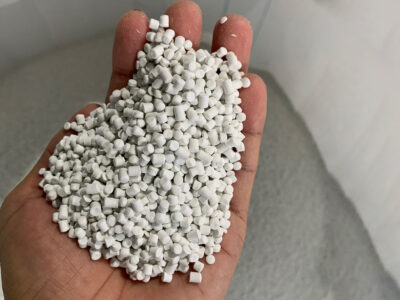The Manufacturing Process of Rigid PVC Compounds

Rigid PVC compounds
Polyvinyl Chloride (PVC) is one of the most widely used plastics in the world. known for its durability and versatility. Rigid PVC compounds, or PVC-U, are particularly notable for their strength and rigidity.making them ideal for a variety of applications, including construction materials, pipes, and fittings. This article delves into the intricate process of manufacturing rigid PVC compounds.
1. Raw Material Acquisition
The journey of rigid PVC compounds begins with the procurement of raw materials. The primary component, Vinyl Chloride Monomer (VCM), is derived from ethylene.which is obtained from natural gas or petroleum. Through a series of chemical reactions involving salt water electrolysis and the refining of oil, chlorine and ethylene combine to form VCM.
2. Polymerization
The next critical step is polymerization, where VCM transforms into polyvinyl chloride (PVC) resin. This process can be achieved through various methods. with suspension polymerization being the most common due to its efficiency and the quality of PVC it produces. In this method, VCM is suspended in water, and an initiator kickstarts the reaction, creating tiny PVC particles known as resin beads.
3. Compounding
Once the PVC resin is formed, it can not be processed alone due to its low thermal stability and high melt viscosity. It requires a combination of additives to enhance its properties and make it suitable for end-use applications. These additives include stabilizers, lubricants, fillers, pigments, and impact modifiers. The concentration of additives is recorded based on parts per hundred of the PVC resin (phr). The compound is generated by intimately mixing the ingredients, which is then converted into the final product under the influence of heat and shear.
4. Forming
Rigid PVC The compounded PVC is then ready for forming into rigid products. The two primary methods used are extrusion and injection molding. In extrusion the PVC mixture is heated and forced through a die. forming a continuous shape like a pipe or profile. Injection molding, on the other hand, involves injecting the heated PVC into a mold to create more intricate shapes.
5. Quality Control
Finishing Quality control is an integral part of the manufacturing process. The properties of the final PVC product, such as its molecular weight and distribution are closely monitored to ensure they meet the required specifications. After the PVC has been shaped, it may undergo additional processes such as cutting, drilling, or decorating, depending on the application.
6. Environmental Considerations
The manufacturing of rigid PVC compounds also involves environmental considerations. The industry has made strides in reducing the environmental impact by recycling PVC products and improving the efficiency of production processes. Manufacturers are continually seeking ways to minimize waste and energy consumption while maintaining product quality.
Conclusion
The manufacturing process of rigid PVC compounds is a complex but well-orchestrated series of steps that transform basic raw materials into versatile and durable products. Through careful control and the addition of specific additives. manufacturers can tailor the properties of PVC to meet the demands of various applications. As the industry evolves. it continues to focus on sustainability and innovation to ensure that rigid PVC remains a material of choice for years to come.
This overview provides a glimpse into the intricate process behind the creation of rigid PVC compounds. highlighting the importance of each step in ensuring the final product’s quality and performance. The manufacturing process is not only a testament to human ingenuity but also to the commitment to sustainability and environmental responsibility in modern production practices.
order our products here!
